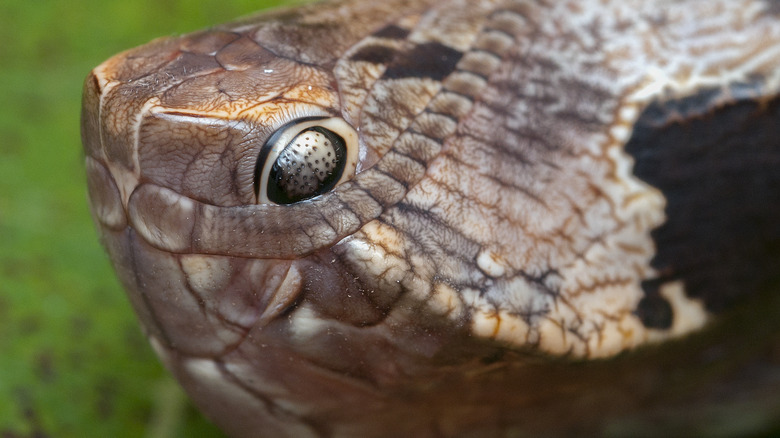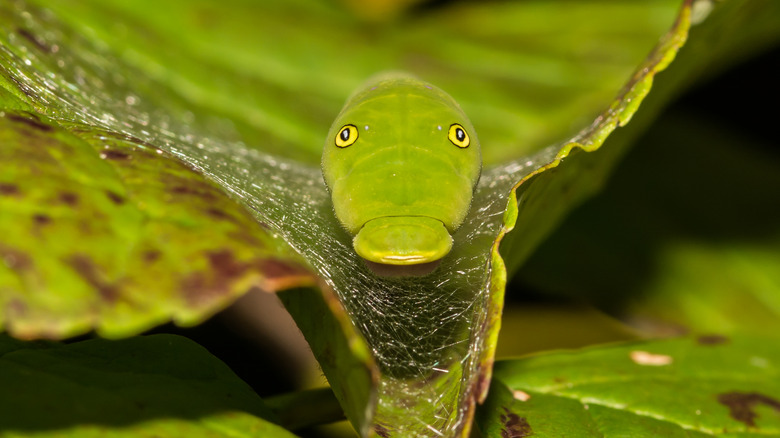The Weird Truth About The Caterpillar That Disguises Itself As A Snake
In the lush wilderness of the Amazon, there are many wild creatures to fear. The caterpillar is not one of them. Equipped with no arms, no legs, and no fangs, and poised to become a fluffy, fluttering moth, the sphinx moth caterpillar is easy prey for pretty much everything moving.
On the surface, there's nothing too extraordinary about being larvae on a stick, a meal in the making. But look a little closer, and you will find that this marvelous caterpillar is actually the jester of the animal kingdom, acting out a real-life fantasy fiction. In order to earn its wings, it must consume enough leaves to complete all four stages of metamorphosis (via bioGraphic). Part of this task includes surviving the rainforest while maintaining a pint-sized, worm-like stature that is the opposite of intimidating.
Avian predators circle above as the caterpillar chomps its way through tiny twigs. At first glance, this crawler appears to lack virtually all defense mechanisms — at least until it is provoked. However, if the sphinx moth caterpillar senses a hint of danger in the air, something magnificent occurs. With a twist of its back and a twirl of its head, this crafty crawler transforms into a venomous snake (via Earth Touch News Network).
The sphinx moth caterpillar changes into a snake
Of course, like fantasy magic, this is all an illusion (via Earth Touch News). The sphinx moth caterpillar has no real venom, no fangs with which to bite you, and no excessive strength to suffocate or constrict. Even so, the transformation is a captivating scene, not to mention a prelude to its next stage of life.
In order to achieve the unusual look of a venom slinging snake, the caterpillar must dangle upside-down and twist its body like a contortionist to reveal the snake-like pattern on its underside. And that's just the beginning.
Following the body alteration, the caterpillar must make its head match the ensemble. To do so, it takes in as much air as possible and literally inflates its own head like a balloon. The end result is a patterned slender physique complete with glistening eyes poking out of a triangular shaped head.
A study called "Animal Behavior," which was published in the Science Direct online journal, revealed that this transformation is more than just a sideshow. It is this very defensive posturing and sleek, camouflaged appearance that is keeping the sphinx moth species alive and flourishing in even the harshest of conditions.

